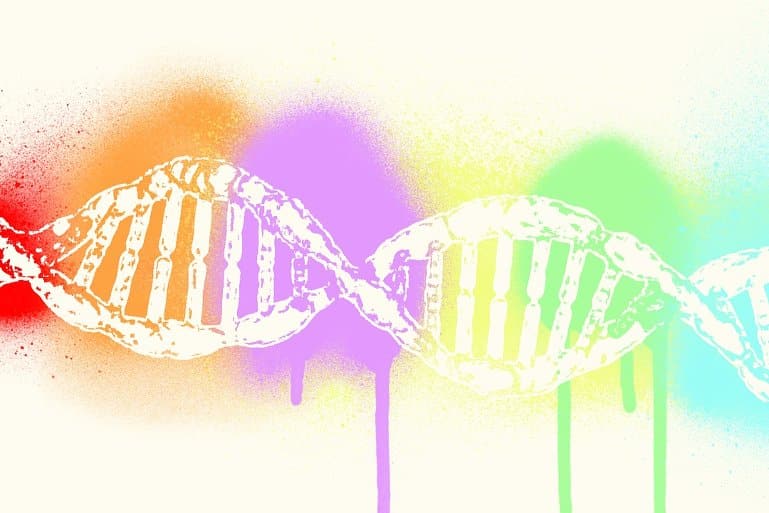Summary: Study reports on epigenetic changes to the FKBP5 gene, a key gene associated with the regulation of stress response in the body, in babies and young children who were injured as a result of abuse, but not accidental injury.
Source: Ann & Robert H. Lurie Children’s Hospital of Chicago
Epigenetic changes in the regulation of a key gene in the body’s stress response system were detected in babies and young children with abusive injuries, as opposed to accidental, according to a pilot study published in the journal Pediatric Research.
The epigenome influences levels of gene expression in response to the physical, social and emotional environment, without altering the DNA sequence. Multiple studies in adults have found that traumatic and adverse childhood experiences are associated with epigenetic alterations in the FKBP5 gene, an important regulator of stress response.
This study is the first to find epigenetic changes in the FKBP5 gene at the time of diagnosis in cases of abuse, regardless of injury severity, socioeconomic status, or psychosocial risk factors.
“The epigenetic differences we found in young children who suffered injuries from abuse were striking and may reflect prolonged toxic stress from living in a truly dangerous environment,” said senior author Mary Clyde Pierce, MD, Emergency Medicine physician at Ann & Robert H. Lurie Children’s Hospital of Chicago and Professor of Pediatrics at Northwestern University Feinberg School of Medicine.

“Unfortunately, the story doesn’t end there. Unmitigated stress is linked to adverse health outcomes in adulthood and survivors of childhood abuse experience higher rates of cardiovascular disease, diabetes, cancer, as well as mental health problems.”
In the United States, child abuse affects over 650,000 children each year.
The study included 82 acutely injured children younger than 4 years old. An expert panel classified the injuries as abusive, accidental, or indeterminate. Cheek swabs and blood samples were gathered to measure DNA methylation of the FKBP5 gene (a chemical change that regulates gene activity).
Dr. Pierce and colleagues found that children with abusive injuries had lower methylation of the FKBP5 gene promoter area, which typically correlates with increased gene expression.
“The dysregulation of the stress gene we observed at diagnosis suggests that the biological response to abuse starts very early,” said Dr. Pierce. “It is possible, however, that early interventions could reverse the epigenetic alterations in the stress system. More research is needed to confirm our findings and potentially identify an epigenetic signature to see if interventions are working.”
About this epigenetics and child abuse research news
Author: Julianne Bardele
Source Ann & Robert H. Lurie Children’s Hospital of Chicago
Contact: Julianne Bardele – Ann & Robert H. Lurie Children’s Hospital of Chicago
Image: The image is in the public domain
Original Research: Closed access.
“Epigenetic differences in stress response gene FKBP5 among children with abusive vs accidental injuries” by Mary Clyde Pierce et al. Pediatric Research
Abstract
Epigenetic differences in stress response gene FKBP5 among children with abusive vs accidental injuries
Background
Survivors of child abuse experience high rates of adverse physical and mental health outcomes. Epigenetic alterations in the stress response system, the FKBP5 gene specifically, have been implicated as one mechanism that may link abuse to lifelong health issues. Prior studies primarily included older individuals with a remote history of maltreatment; our objective was to test for differential methylation of FKBP5 in children with abusive vs accidental injuries at the time of diagnosis.
Methods
We conducted a cross-sectional pilot study of acutely injured children <4 years old at two children’s hospitals (n = 82). Research personnel collected injury histories, buccal swabs (n = 65), and blood samples (n = 25) to measure DNA methylation. An expert panel classified the injuries as abusive, accidental, or indeterminate.
Results
Children with abusive as compared to accidental injuries had lower methylation of the FKBP5 promoter in buccal and blood cells, even after controlling for injury severity, socioeconomic status, and psychosocial risk factors.
Conclusion
These findings suggest that epigenetic variation in FKBP5 may occur at the earliest indication of abuse and may be associated with delayed resolution of the HPA axis stress response. Additional testing for epigenetic differences in larger sample sizes is needed to further verify these findings.






